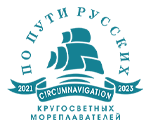- Public diplomacy: to create positive image and to increase the quality of knowledge about Siberia and Russia with the help of meetings and events that will be organized on the route of the voyage.
- Awareness rising and education: to motivate young generation to study geography by means of making “live lessons” – educational films and materials about countries that will be in the voyage route. Crew members are going to make photos, videos and to collect data in order to make “live geographical lessons” for Russian students.
- Science and education: initiating of the partnership with foreign universities and geographical societies in the field of geographical science and academic mobility development, particularly, in the field of the authors international science-educational program “recreational geography and tourism”.
Sporting: to set the world record of continuous navigation on sailing trimaran; to be first in the world to go round the South America (Cape Horn) – nominated into the Guinness World Records and Russian Records book.
We are planning to create up-to-date methodological complex of live geographical lessons that would broaden students’ horizons:
- 50 videos,15 minutes each,
- Methodological recommendations for teaching “Live geographical lessons”,
- Additional photo and video materials,
- Caption for self-studying for each lesson.
Live lessons will be in public access on the You Tube channel during the round-the-world expedition in 2021– 2023.
These lessons will be created for teachers, professors, students, adults and for everyone who is interested in broadening their horizons, getting new knowledge, the ones who love their country and who wants to grow up morally and spiritually intelligent generation.


























